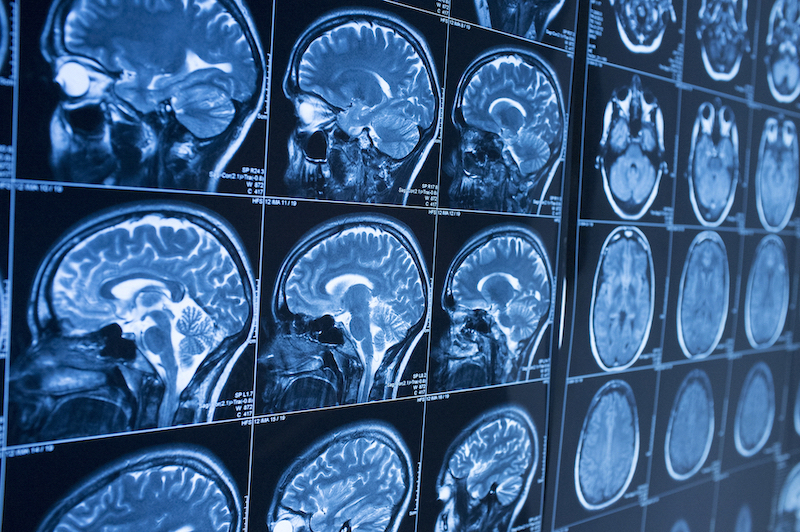Alejandra Prado | March 11, 2022 | Brain Injuries

CTE stands for chronic traumatic encephalopathy. CTE is a degenerative brain disease that results from repeated brain injuries.
You may have heard about CTE in the context of football players who suffer repeated concussions. But anyone can suffer from CTE if they have experienced more than one brain injury — regardless of how these personal injuries happen.
Here is an explanation of what CTE is and how this brain disease happens.
Characteristics of CTE
CTE is characterized by a few features:
CTE Results from Repeated Brain Trauma
Unlike Alzheimer’s disease, amyotrophic lateral sclerosis (ALS), Parkinson’s disease, and other degenerative brain disorders, CTE does not result from genetics. Instead, it results from physical damage to the brain that sets off a chain reaction.
Damage to the brain results in tau proteins accumulating around the brain’s blood vessels. Repeated brain injuries will cause more tau proteins to accumulate.
These proteins interfere with the brain’s blood supply and cause sections of the brain to atrophy. These atrophied sections of the brain cannot process or store information in the same way that healthy brain tissue does.
CTE Is Degenerative
The brain does not heal or improve once the chain reaction begins. Instead, the condition of the brain will worsen.
As sections of the brain atrophy and die, the tau proteins interfere with the blood supply to the remaining healthy areas of the brain. The damage accumulates, with the brain cells breaking down due to a lack of blood. Over time, more and more brain sections will atrophy, ultimately resulting in dementia and death.
CTE Causes a Range of Symptoms
CTE causes various symptoms as areas of the brain wither and die. These symptoms include:
Cognitive Symptoms
Some of the cognitive symptoms of CTE include memory loss and difficulty concentrating. Patients have trouble planning and executing tasks. They may suffer from confusion when thinking through a problem or answering a question.
Behavioral Symptoms
Patients might experience aggressive and impulsive behavior. CTE patients can become unpredictable and unstable with violent outbursts. They might show signs of paranoia.
Mood Symptoms
Many CTE patients show signs of mood disorders like bipolar disorder. They might become depressed or become suicidal. They may also turn to drugs or alcohol to cope with their symptoms.
Motor Symptoms
CTE patients can develop tremors. They can have difficulty speaking and walking. They may lose dexterity in their fingers and hands.
Diagnosing CTE
Imaging techniques are currently unable to diagnose CTE in living patients. To diagnose CTE, doctors need to dissect and weigh the brain. As a result, doctors can only diagnose CTE after death.
When examining the brain of a patient with advanced CTE, doctors will see visible shrinkage of the brain. They can also find gaps in the brain tissue where the brain has atrophied. Finally, the brain of a CTE patient often weighs significantly less than a healthy brain.
Risk Factors for CTE
The biggest risk factor for CTE is repeated brain trauma. Doctors often find the disease in boxers, hockey players, and football players. They also find the disease in people who work around explosives like combat soldiers, miners, and demolition workers. Victims of ongoing domestic violence or child abuse can also develop CTE.
Significantly, doctors believe that CTE does not require repeated concussions. Instead, CTE can develop after repeated brain injuries even though none of the injuries rose to the level of a concussion.
CTE Prevention
Doctors cannot cure CTE. As a result, doctors have focused their efforts on preventing concussions.
Some ways to minimize your risk of CTE include:
- Avoid contact sports
- Take time after a head injury to recover
- Wear protective equipment, including a mouthguard, when playing sports
Unfortunately, defective safety equipment, pressure from coaches and schools, and poor medical advice can set the stage for CTE despite your best efforts. You should always exercise your discretion in deciding whether to participate in an activity when you have previously suffered a head injury and face the risk of another head injury.
Contact the Tampa Brain Injury Law Firm of Roman Austin Personal Injury Lawyers for Help Today
For more information, please contact the legal team of Roman Austin Personal Injury Lawyers for a free initial consultation with a brain injury lawyer in Tampa. We have four convenient locations in Florida: Clearwater, New Port Richey, and Tampa.
We serve throughout Pinellas County, Hillsborough County, Pasco County, and its surrounding areas:
Roman Austin Personal Injury Lawyers – Clearwater Office
1811 N. Belcher Road, Suite I-1
Clearwater, FL 33765
(727) 787-2500
Roman Austin Personal Injury Lawyers – Congress Ave Office
2360 Congress Avenue
Clearwater, FL 33763
(727) 591-5610
Roman Austin Personal Injury Lawyers – Tampa Office
6601 Memorial Hwy Suite 202
Tampa, FL 33615
(813) 686-7588
Roman Austin Personal Injury Lawyers – New Port Richey Office
2515 Seven Springs Blvd.
New Port Richey, FL, 34655
(727) 815-8442
